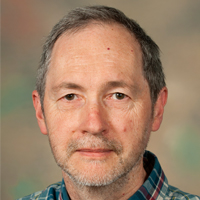Researchers at STFC-RAL’s Remote-Sensing Group (RSG) are working to improve our understanding and ability to monitor and act on climate change,
Dr Brian John Kerridge
RAL Space
Dr. Brian Kerridge is Head of the RAL Space Remote-Sensing Group, part of the Science and Technology Facilities Council’s (STFC). Brian has expertise in atmospheric composition and retrieving atmospheric constituent distributions from satellite observations.
Production of multi-year global data sets on methane, tropospheric ozone, water vapour, aerosols, clouds and temperature for greenhouse gas are available for climate monitoring, research and climate services.
To help improve our understanding and ability to monitor and act on climate change, researchers within the STFC-RAL’s Remote-Sensing Group (RSG), part of the National Centre for Earth Observation (NCEO), have:
- Pioneered retrieval of tropospheric ozone and height-resolved methane from satellite ultraviolet (UV) and infrared (IR) sounders, respectively, and the joint retrieval of water vapour and temperature from IR and microwave sounders.
- Developed a state-of-the-art scheme with Oxford University partners to retrieve aerosol and cloud from satellite visible/infrared imagers and to derive radiative fluxes, improving understanding of the role of radiative forcing in climate change.
Why do atmospheric climate data records from space matter?
Our ability to observe the changing distributions of greenhouse gases and other atmospheric constituents of importance to climate is integral to international efforts to understand climate change and plan for its consequences. Satellite climate data records uniquely provide a global perspective Below is an overview by Dr Brian Kerridge, Head of the Remote Sensing Group at RAL Space. Dr Kerridge takes us through a number of atmospheric variables and how new developments are helping us to provide more valuable datasets.
Methane
Methane is an important long-lived greenhouse gas whose concentration in the troposphere has increased by a factor of around 2.5 since pre-industrial times, mainly as a result of human activity (IPCC 2013). Researchers at RAL have developed a scheme to retrieve global height-resolved methane distributions from the Infrared Atmospheric Sounding Interferometer (IASI) on the MetOp (find out more). Differentiating between lower and higher layers will help to quantify surface emissions. The MetOp is a series of three polar orbiting meteorological satellites operated by the European Organization for the Exploitation of Meteorological Satellites (EUMETSAT).
As can be seen in Figure 1, the IASI data record reveals that, as well as varying seasonally, levels of methane have increased since 2007 at all latitudes. Production of this data is heavy on computation – the team at RAL made intensive use of the JASMIN computer infrastructure. The processed data, ready for use, is available through CEDA.

Ozone
Ozone is a significant greenhouse gas in the troposphere, where most is produced through chemical reactions involving volatile organic compounds and nitrogen oxides from anthropogenic emissions and biomass burning. The RAL Remote Sensing Group was first to demonstrate tropospheric sensitivity for satellite ozone sounding (Munro et al. 1998) and has subsequently pioneered tropospheric ozone retrieval from UV satellite sounders (Miles et al).
The RAL group is producing global data from five satellite instruments to span two decades (1995 – present), that will be free to access, as part of ESA’s Climate Change Initiative (CCI). The group’s data already contributes to EC’s Copernicus Climate Change Service and to international climate change status assessments such as IGAC’s Tropospheric Ozone Assessment Report.
Water vapour and temperature
Earth’s outgoing longwave radiation is strongly influenced by water vapour and especially sensitive to changes in the mid-upper troposphere. Global 3-D distributions of water vapour and temperature are therefore of key importance to understanding climate change. The RAL Remote Sensing Group has developed a scheme to retrieve vertical profiles of water vapour and temperature jointly from co-located observations by IASI and two microwave sounders (the Advanced Microwave Sounding Unit and Microwave Humidity Sounder) on the MetOp satellites. The v1.0 data set from MetOp-A (2007-17) has been produced with this scheme on JASMIN and will be available soon via CEDA.
Clouds
Clouds are of central importance to Earth’s radiation budget and climate and the changing global distributions of different aerosol types can contribute to climate radiative forcing. The RAL Remote Sensing Group, in partnership with University of Oxford, has developed the Optimal Retrieval of Aerosol and Cloud (ORAC) scheme to retrieve distributions and optical properties of clouds and aerosols from satellite VIS/IR imagers. The retrieved aerosol and cloud data, and the broad-band radiative fluxes derived from them, are self-consistent, which helps enable studies of aerosol-cloud interaction and indirect radiative forcing.
In the European Space Agency’s (ESA) Climate Change Initiative, global data sets on cloud and aerosol have been produced for the period 1995-2012 from the UK’s Along-Track Scanning Radiometers on ESA’s European Remote Sensing 2 (ERS-2) and Environmental (Envisat) satellites.
